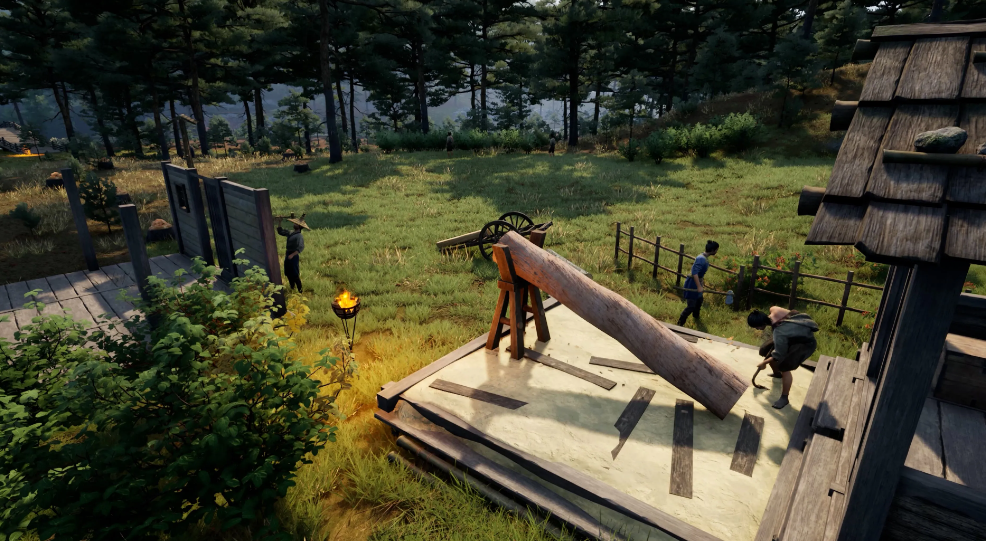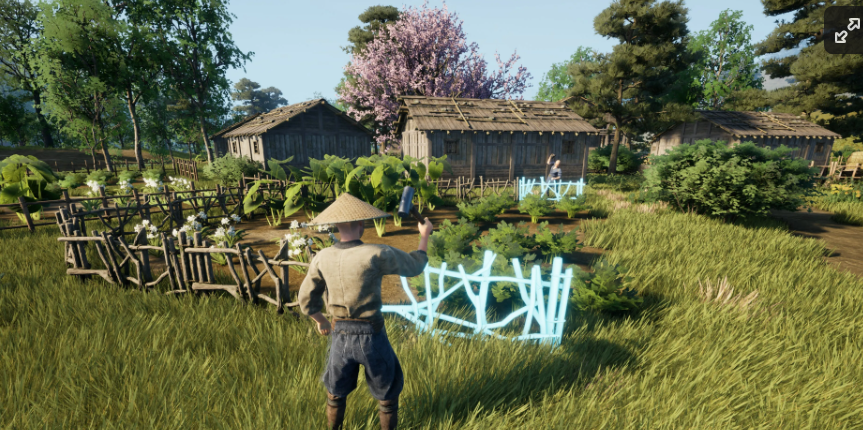Sengoku Dynasty: A Complete Guide to Building Your First Village
Key Takeaways
- Start with the Bell Tower: Your village hub should be carefully placed for efficient building, resource gathering, and protection.
- Establish Essential Structures: Build key facilities like a General Storage, Workshop, and Forager’s Hut to manage resources and support villagers.
- Secure and Expand: Complete quests, gather resources, and clear bandit camps to grow your influence and strengthen your village.
Starting from scratch in Sengoku Dynasty is no small feat. Between gathering resources, constructing buildings, and defending your territory, building a thriving village can be a challenge. In this guide, you’ll learn step-by-step how to lay the foundation of a successful village, from placing your Bell Tower to gathering critical resources, planting crops, and assigning villagers to essential tasks.

Step 1: Choosing the Best Location for the Bell Tower
The Bell Tower is the heart of your village, and it’s essential to place it in an optimal location since all buildings must be constructed within its radius. Although it’s tempting to explore distant spots, the ideal placement is near the Sosogi Village ruins right where you begin. The benefits of this area include:
- Resource Availability: The ruins and burnt structures provide salvageable resources, such as wood, charcoal, and planks.
- Access to Water: Proximity to the river makes fishing easy and sustainable.
- Spacious Terrain: Once the ruins are cleared, the area provides ample space for expansion.
If you decide to scout around, the northern hills near the abandoned shrine are another option. However, be prepared for increased challenges, such as encounters with wildlife and bandits.

Step 2: Constructing Houses and Accommodations
Your initial quest will be to build one house, but you’ll eventually need more. Aim to build at least three houses right away to provide enough beds for your character, Ako, and Yonaisuke a potential village member. You won’t need to worry about constructing many additional houses immediately, as villagers will take time to arrive, and certain work buildings also contain beds.
Step 3: Building Key Facilities

A thriving village requires functional facilities for storage, crafting, and production. Here’s a breakdown of the essential buildings you should prioritize:
General Storage
The General Storage is indispensable for storing excess resources. Villagers also depend on this storage facility for the materials they need to work effectively. Build it early to keep your inventory organized and accessible.
Workshop
The Workshop not only provides an additional bed but also enables crafting of essential items like the Copper Yari and Shortbow. Both weapons will be valuable tools as you start defending your village and hunting for resources. Crafting these early on will give you a considerable advantage in the game.
Woodcutter’s Hut
As you expand, you’ll need a steady supply of planks and wood, especially as burned buildings run out. A Woodcutter’s Hut will help maintain a reliable wood supply, crucial for larger buildings.
Forager’s Hut
A Forager’s Hut is essential for gathering easy-to-find resources such as Grass, which is later processed into Straw. Locate this hut near the river to maximize access to these materials.

Step 4: Planting and Managing Crops
Creating a sustainable food source is critical for your village. To get started, visit Chiyone in the cherry grove east of the Sosogi ruins. By completing her quest, you’ll receive Gobo Seeds, which you can plant in a small 2×2 field. Assign a villager to tend to the crop field, and ensure they have access to tools like a hoe and seeds in storage.
As you expand your agriculture, keep your fields small and manageable, assigning only a few villagers to farming tasks. This way, they’ll be able to handle other essential roles around the village.
Step 5: Rebuilding the Bridge
With your village underway, it’s time to tackle one of your first major construction tasks: rebuilding the bridge near Chiyone’s house. This task is part of a quest from Sayuri, who will join your village after the bridge is completed.
Before beginning, gather the necessary materials and reassign one of your villagers (preferably a Forager) to help with construction. Completing this bridge opens up new areas and builds goodwill among neighboring NPCs.
Step 6: Dealing with Bandits and Securing Resources
Along the river, you’ll encounter bandit camps, which can be both a challenge and a resource opportunity. Here are some tips for dealing with bandits:
- Hunt in Small Groups: Engage bandits one-on-one or in small groups to avoid being overwhelmed.
- Utilize Crafted Weapons: Use your Copper Yari and Shortbow to keep the fight at a safe distance.
- Loot for Money: Defeated bandits often carry valuable loot that can be sold for extra money, which you can use to purchase upgrades like the Drying Rack.
Once you have enough funds, purchase the Drying Rack to begin processing Grass into Straw. This will significantly boost your building capabilities as you plan for future expansion.
Step 7: Completing Quests for XP and Resources
Alongside managing your village, complete quests from characters like Kengyo and Matsumaru. These quests not only provide you with XP in the Way of the Warrior but also yield valuable materials, such as meat, which keeps your villagers well-fed. Additionally, completing these quests strengthens your character, preparing you for future confrontations with stronger foes.
Step 8: Gaining Control of the Sosogi Region
The Sosogi region holds valuable resources and opportunities for expansion. To gain control:
- Equip Peasant Clothes: Provided by Toshichi, these clothes offer better protection than your initial rags.
- Defeat Looters: Locate the bandit leader and his minions in the northwest and defeat them. Prepare with weapons, armor, and plenty of arrows.
- Expand Your Crafting: With control over Sosogi, you’ll be able to craft Copper tools, advancing beyond basic wood and stone.
Next Steps: Sustaining and Growing Your Village
With control over Sosogi, your village is poised for growth. Use Copper tools for better resource gathering and continue building essential structures to expand your village’s capabilities. Assign villagers to roles that match their skills and keep an eye on food supplies, storage needs, and defense measures.
Frequently Asked Questions (FAQs)
Q: How can I increase the number of villagers in my village? A: Start by building extra houses with available beds, and complete quests to attract NPCs like Ako, Yonaisuke, and Sayuri. Each quest you complete may open new opportunities for villagers to join you.
Q: What is the fastest way to get Straw? A: Build the Drying Rack and assign a villager to process Grass into Straw. It’s an efficient way to keep up with the demand as you expand your village.
Q: How should I prioritize buildings? A: Start with General Storage, a Workshop, and a few houses. As you gather more resources, add facilities like the Woodcutter’s Hut and Forager’s Hut to support production needs.
Q: Where is the best place to hunt for XP and resources? A: Hunting around the river and completing Kengyo and Matsumaru’s quests are effective ways to gain XP, meat, and other resources while completing early objectives.
Q: What should I do if bandits keep attacking my village? A: Equip yourself and villagers with crafted weapons like the Shortbow and Copper Yari. Engage bandits on sight to reduce their numbers and protect your village.





